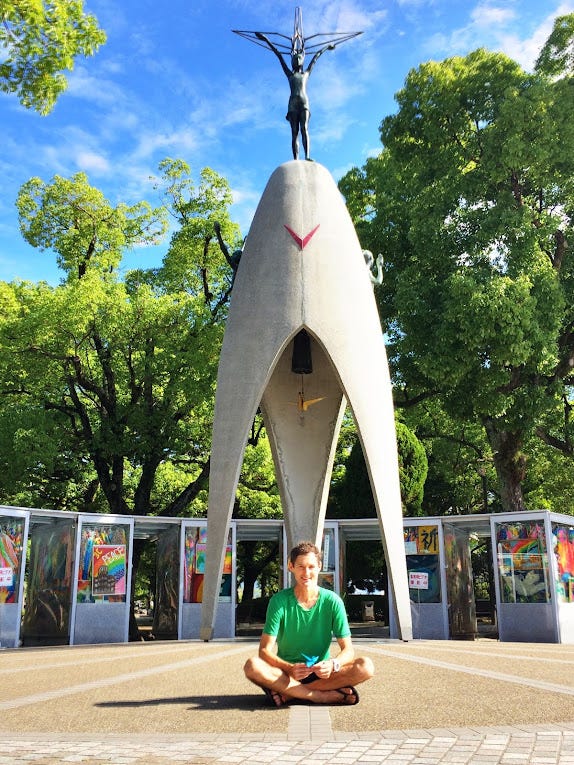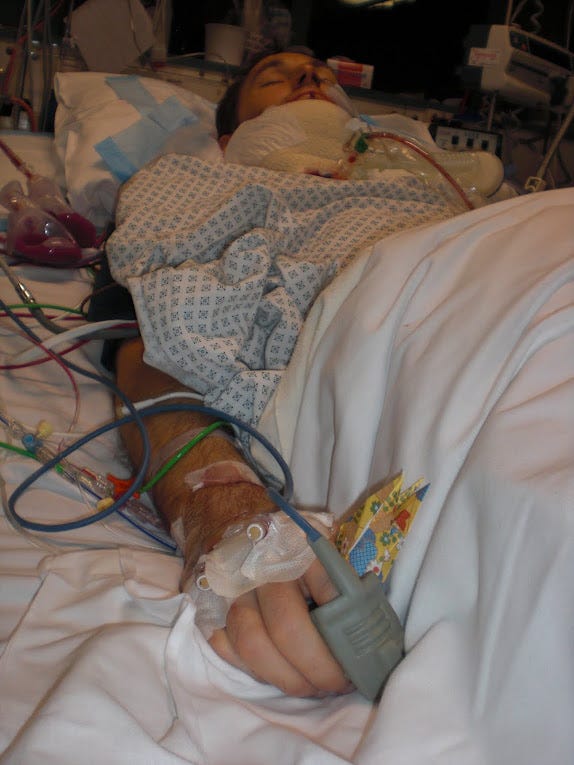One Thousand and One Paper Cranes
On Wednesday, I left an origami crane at the Children’s Peace Monument in Hiroshima, in memory of Sadako Sakashi. I first learned of Sadako’s story at the Blood & Cancer Centre at Wellington Hospital, where there is a large, colourful display of origami paper cranes in a glass case in the foyer. It’s a story of hope and determination that inspires many cancer patients around the world.
Sadako was just two years old when the atomic bomb was dropped by a USA plane on her home city, on a quiet clear morning in August 1945.
Living not far from the centre of the blast, her mother watched the force of the blast throw her through the window of their house and feared she had been killed. But Sadako survived the blast. She lived 10 years before being diagnosed with leukaemia, which doctors in Hiroshima came to refer to as “the atomic bomb disease”, as extraordinary rates of the city’s population developed leukaemia after being exposed to the nuclear radiation from the bomb.
Sadako was admitted to Hiroshima hospital in 1955 when purple blotches started appearing on her body. She was told she had the atom bomb disease and had at most one year left to live. Soon after, her leg began to swell to one and a half times its normal size.
Over the course of many weeks, doctors administered medicine in an attempt to stay the disease, yet Sadako’s condition worsened. Once or twice she was allowed out from the hospital, to join her friends from school and try to experience a normal life.
Sadako sought hope in the Japanese legend of One Thousand Cranes, in which it is believed if you fold a thousand paper cranes, your wish will be granted. Sitting up in her hospital bed, she folded cranes day after day, using whatever paper she could find. Sometimes she used the wax paper wrappings from her medicines. Her schoolmates joined in, bringing more and more paper cranes to Sadako, wishing her a healthy recovery. The museum at Hiroshima displays Sadako’s tiny, delicate origami wax paper cranes, along with the medical charts tracking her white and red blood cell count and temperature.
Hiroshima Peace Memorial - Sadako
I folded a paper crane to leave at the memorial to Sadako Sakashi, in the Hiroshima Peace Park.
Sadako and her friends folded over one thousand cranes. But sadly, after months in the hospital, Sadako passed away. The story of her determination and her schoolmates’ wish for peace spread throughout the city, and a monument to Sadako was built in the park in the city.
At the base of the monument there is an arrangement of five large glass cases, all packed to the brim with colourful origami cranes sent from people all over Japan and the rest of the world.
I folded a simple light blue paper crane and left it in the case, as thanks for all the inspiration and hope that Sadako and the story of One Thousand Cranes gave me, my family and friends.


